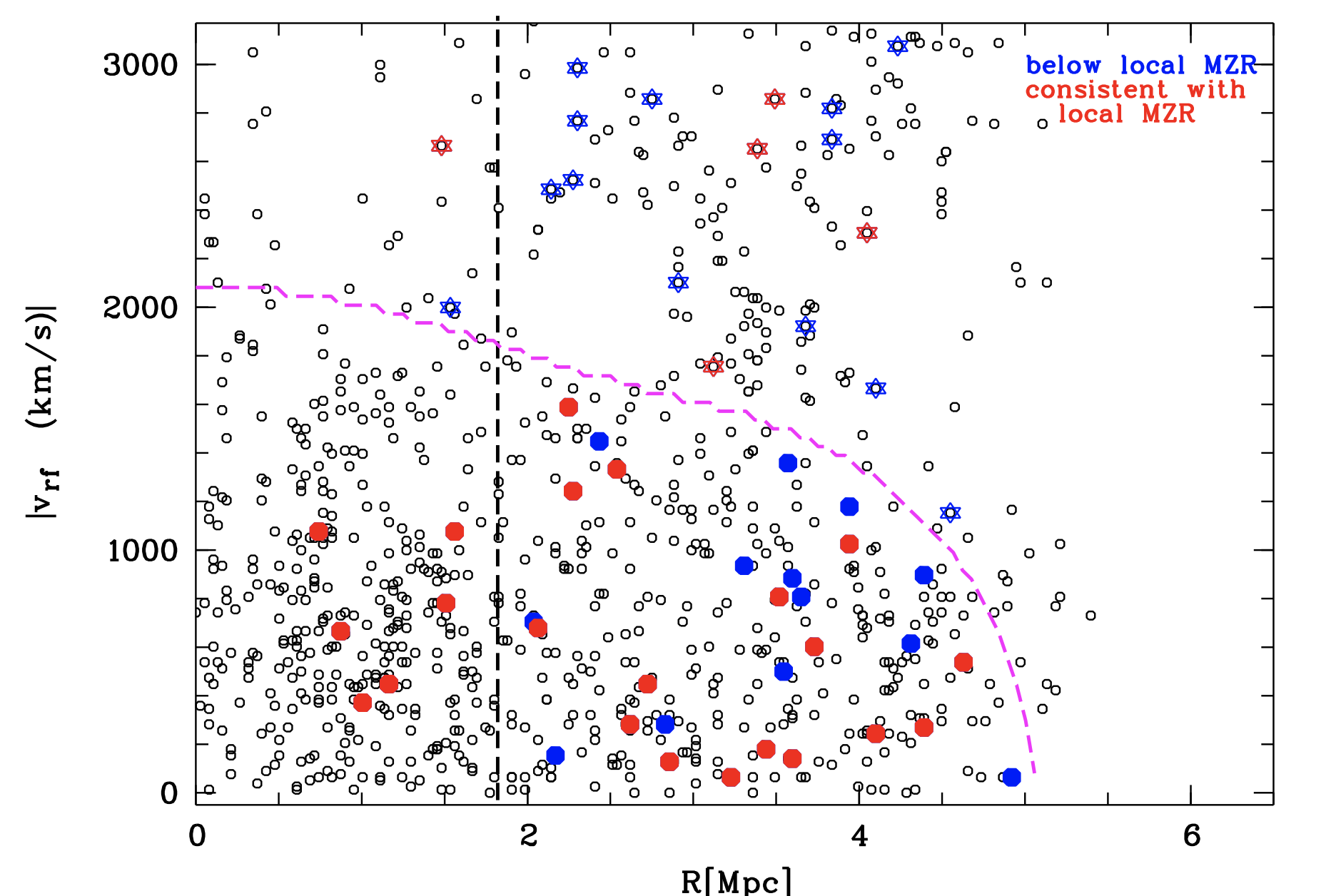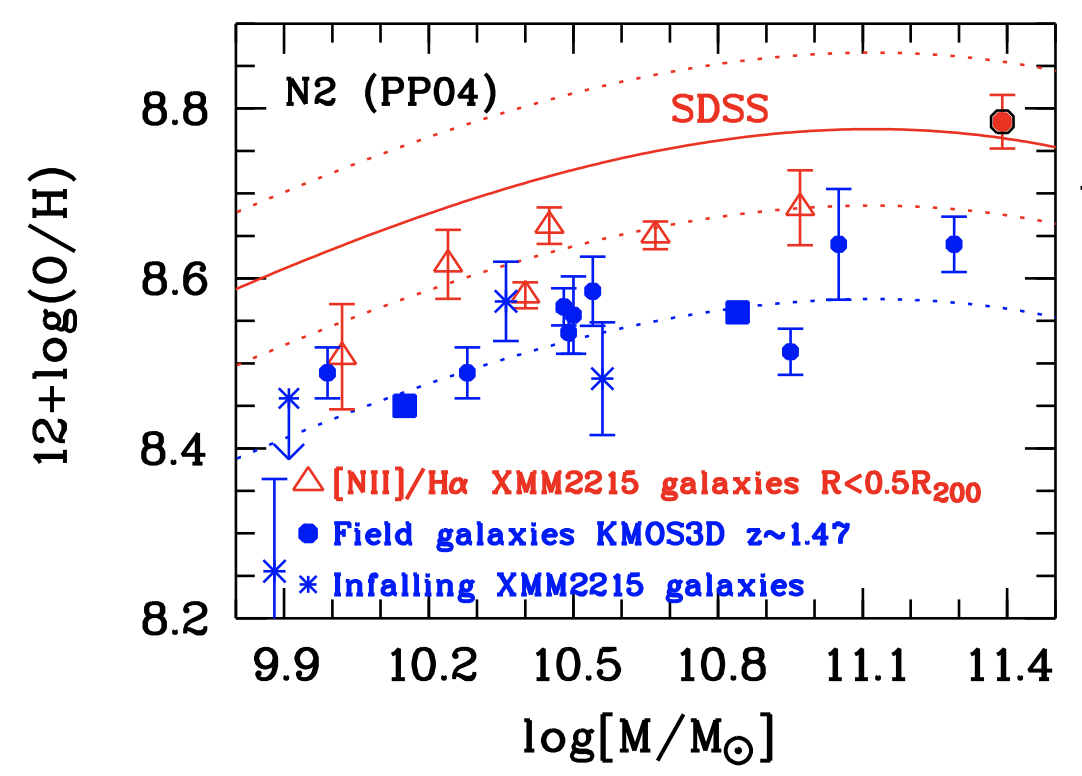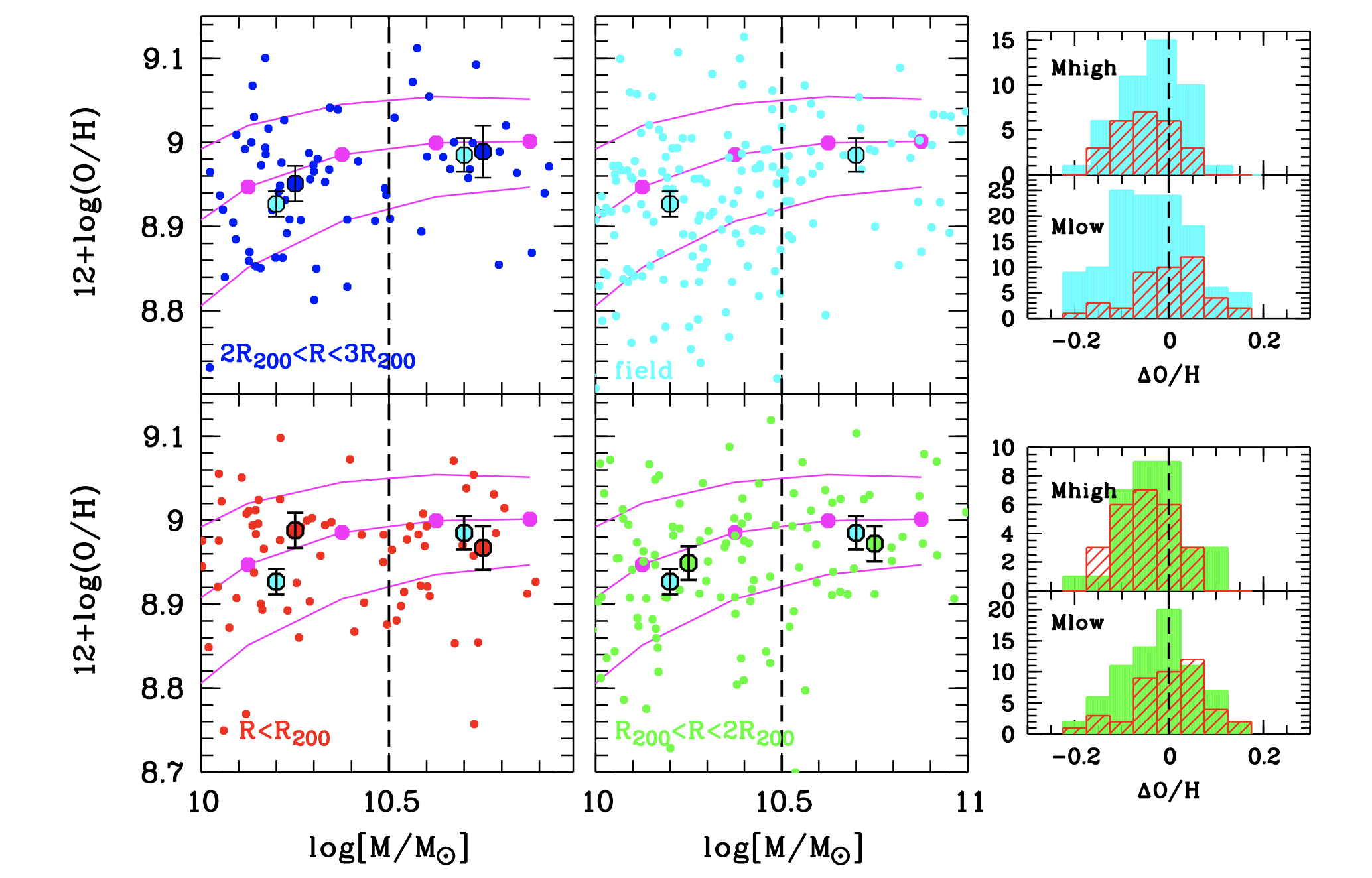Galaxies fly towards the center of the cluster:
- after passing Rvirial (R200) ➡ slow quenching (supply of pristine gas onto galaxy disk halted)
- above an ICM threshold ➡ rapid quenching (cold gas affected by ram-pressure)
Data:
- CLASH-VLT VIMOS spectra & WFI photometry (UBVRIz) for field (0.3<z<0.4) + RXJ2248-4431 cluster (0.33<z<0.36)
- For metallicity study: matched local comparison sub-sample of SDSS emission line galaxies (0.04 < z < 0.08)
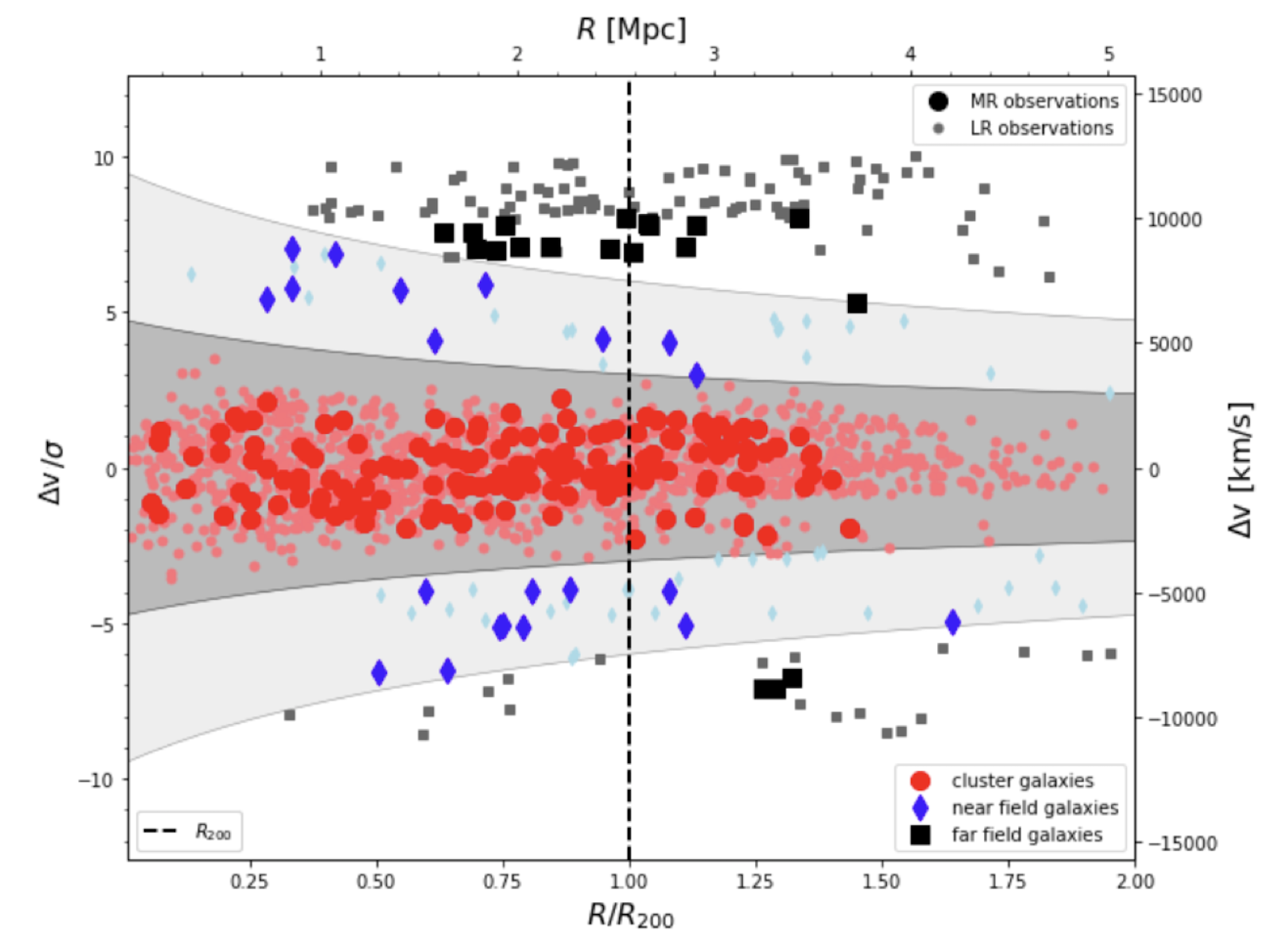
Phase space analysis: clustercentric radius vs. line-of-sight velocity for the sample of CLASH galaxies with 0.3 < z < 0.4.
- Based on the phase-space analysis (Carlberg et al. 1997), we identified the cluster and field galaxies, as well as the cluster specific parameters: R200 = 2.57 ± 0.05 Mpc; M200 = 1.77 ± 0.03 × 1015M⊙
- based on the BPT (Baldwin et al. 1981) diagnostic diagram, we exclude all AGNs from the sample
- The SFRs are derived from extinction-corrected Hα luminosities
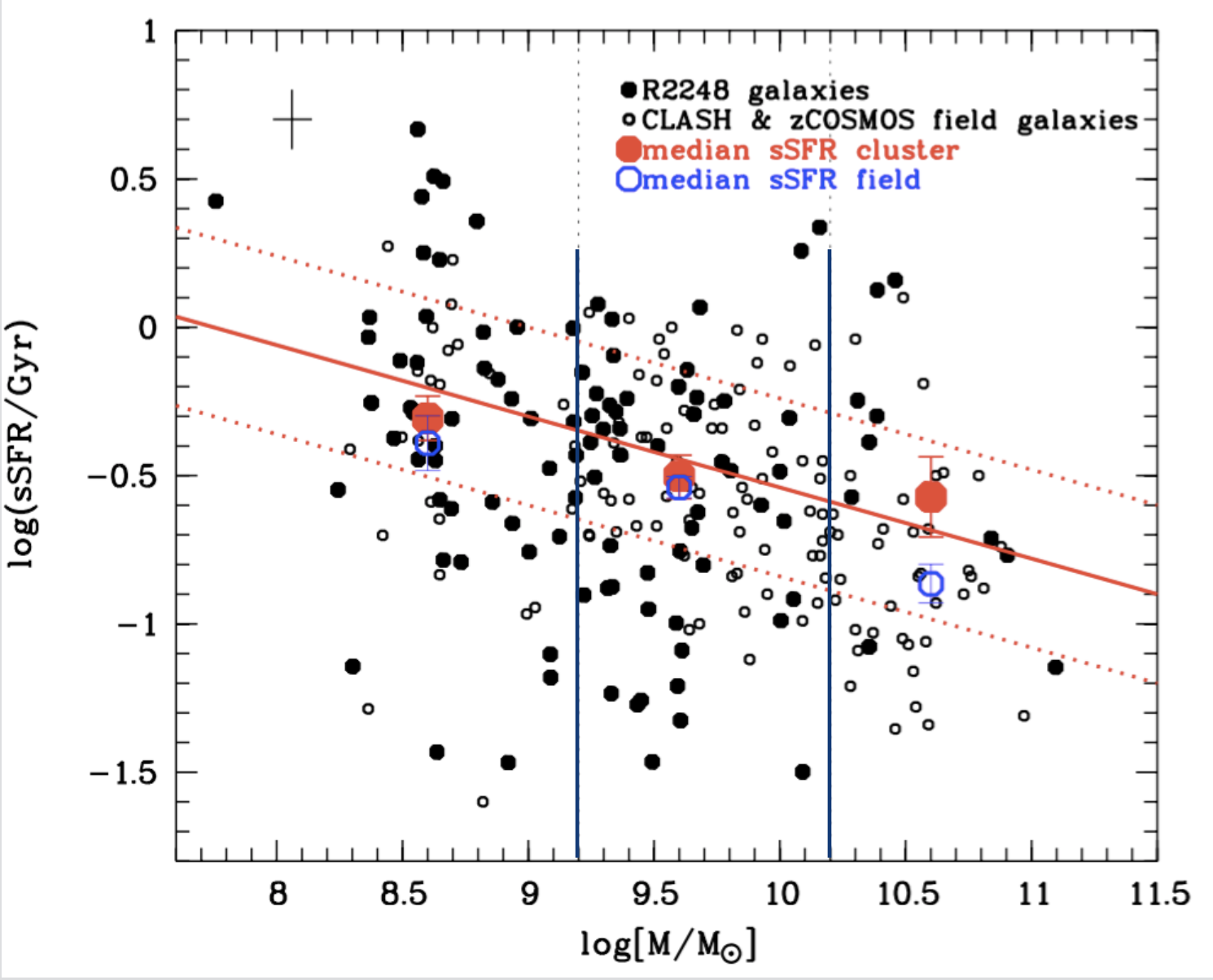
sSFR–M relation for the R2248 cluster members (filled circles) and for the comparison sample field galaxies (open circles) with available measurements of the Hα emission line. The red solid line stands for the the main sequence of SF galaxies for a redshift of z ∼ 0.4, as derived by Peng et al. (2010). In this study, the “mass complete” sample is represented by the intermediate bin (9.2 < log(M/M⊙) < 10.2). In this mass bin, the median sSFR values of both cluster and field galaxies are comparable given the errors.
- Gas phase abundances were derived employing the O3N2 calibration of Kewley et al. 2013
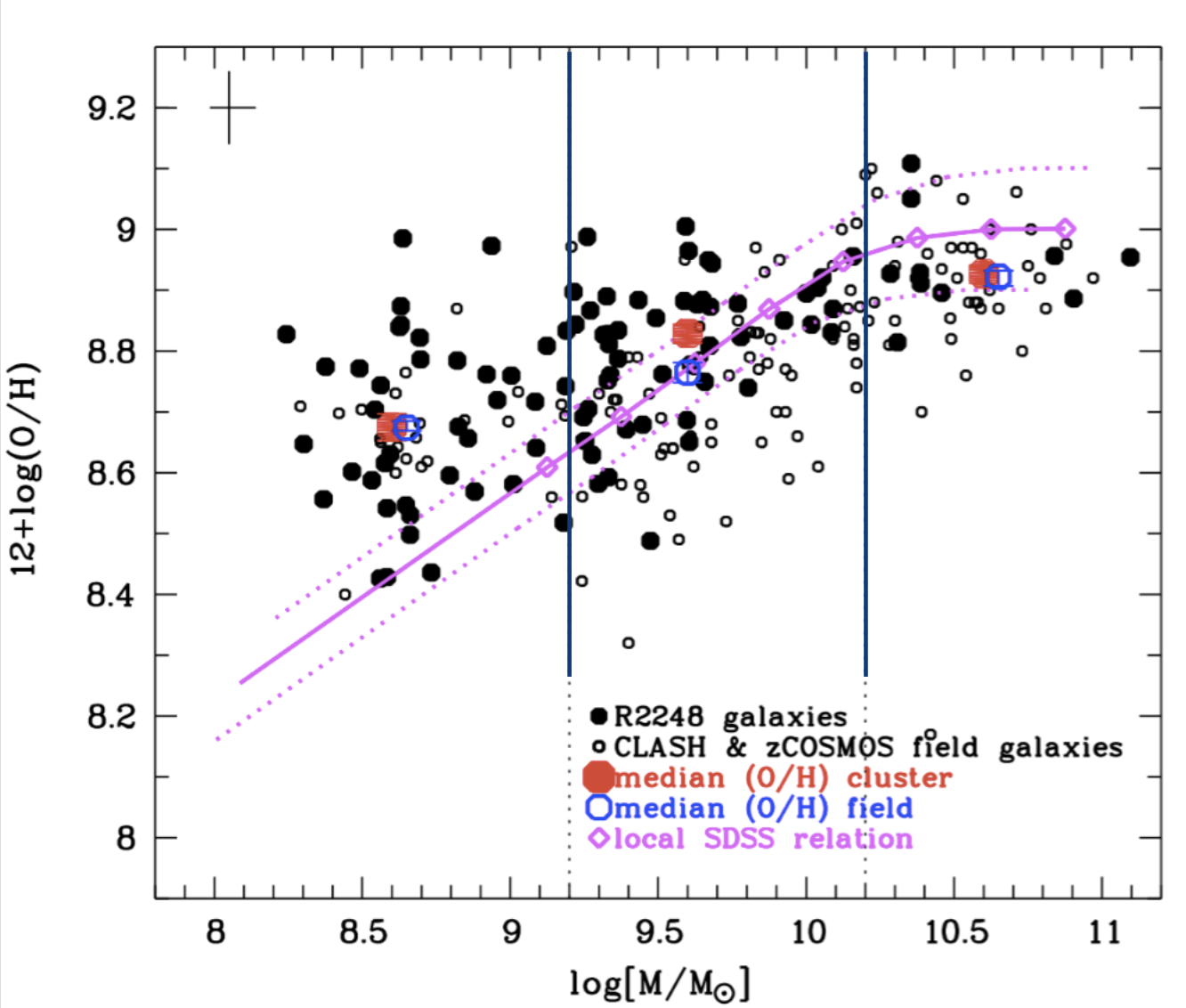
Mass–metallicity relation (MZR) for R2248 cluster members (filled circles) and the comparison sample of field galaxies (open circles) using the O3N2 metallicity calibration of Kewley et al. (2013). In the mass complete bin (9.2 < log(M/M⊙) < 10.2), the median (O/H) for the cluster galaxies is higher than the median (O/H) for the field galaxies by 0.065 dex, with a 1.8σ significance.
- The observed Z(M,SFR) was compared to the theoretical predictions from Lilly et al. 2013

Difference between the measured (O/H)s for cluster galaxies (filled circles) and the comparison sample of field galaxies (open circles) and the expected (O/H)s from the formulations of Lilly et al. (2013) for a primordial infall metallicity Z0 relative to the yield y, Z0/y = 0. The (O/H)s of the cluster galaxies (big filled circle) deviate more strongly from the FMR model predictions (by ∼0.12 dex) than the ones for the field galaxies (big open circle), which are in quite good agreement with the model predictions.
(O/H) ~ SFR/inflow * yield
➡ If inflow decreases or stops by almost constant SFR ➡ O/H increases
Conclusion ➡ Strangulation
Ciocan et al. 2020, A&A, 633, A139


